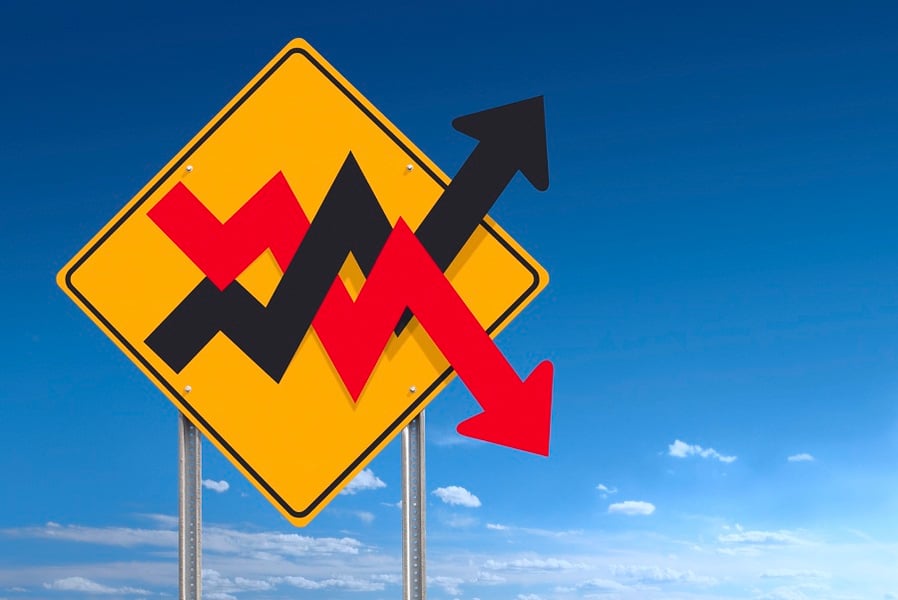The power of systematic strategies, particularly those that take their cues from volatility, has become a hot-button issue amid the search to classify the causes of last month's dramatic market selloff.
A report from Société Générale's global quantitative research team, led by Andrew Lapthorne, sheds further light on the influence of such strategies during the recent market downturn.
Most of the discussion around "forced selling" that occurred during the worst days of August's rout centered on risk parity funds, which aim to spread risk equally across different asset classes to produce smoother returns. Typically this entails having a highly levered portfolio of bonds. As volatility in one asset class rises, these funds will scale down their holdings in that segment and rebalance into others.
(More: Risk parity: The real culprit behind the market's madness)
Mr. Lapthorne explains the confluence of events that made August particularly rough for risk parity funds:
For most of the year, U.S. bond volatility has drifted upwards as bond markets debated the likelihood of a U.S. rate rise, while U.S. equity volatility moved ever lower. As a consequence those who weight their assets according to realized volatility would have been increasingly exposed to equities — and increasingly less to bonds. Just in time for the equity market collapse and in turn for equity volatility to explode upwards.
Ouch.
But it wasn't just risk parity funds whose structure may have necessitated divestments. Liquidations made by close cousins, such as target volatility funds, were also likely contributors to the surge in realized volatility as they sold off stocks and shifted into cash.
DYNAMICS AMPLIFIED
Those dynamics were in turn amplified by a spike in implied equity volatility, which was pressured higher in part by the proliferation of exchange-traded products and traders who dabble in volatility-related futures. The VIX index, a measure of expected volatility, posted its largest 10-day gain on record:
http://www.investmentnews.com/wp-content/uploads/assets/graphics src="/wp-content/uploads2015/09/CI101303910.JPG"
But were risk parity vehicles the proximate cause for the selloff?
Société Générale would contend that they weren't. And the team isn't offering any precise answers.
"A point we can see in the data: markets went first, volatility orientated strategies started misbehaving thereafter," he wrote, echoing a similar point made by a JPMorgan analyst team last week.
In other words — don't hate the player, hate the game.
For added emphasis, Mr. Lapthorne notes that the beta — or the degree to which a portfolio's assets move in tandem with the broader market — of low-volatility strategies was unusually high going into August.
A simple reason why the beta of low-volatility strategies was elevated has to do with a problem of success: Past performance made funds that seek to minimize and manage volatility a magnet for extra assets. In an environment in which volatility plays a bigger role in dictating where funds go, it isn't surprising to see these funds move more in line with the broad market when volatility spikes across the board.
Risk parity and target volatility funds can take solace in the fact that pretty much every flavor of investment strategy had a similarly poor showing last month. SocGen observed that in August, the dispersion of performance among the investment styles posted one of its lowest readings since 1990:
http://www.investmentnews.com/wp-content/uploads/assets/graphics src="/wp-content/uploads2015/09/CI101305910.JPG"
"This then argues very strongly that the August sell-off was market driven and fairly indiscriminate, not economically driven, or a function of major style rotation," Mr. Lapthorne said. "Yes, low volatility strategies were not as defensive … as many would have liked, but this was also down to the popularity going into the sell-off."
Still though, the news isn't all good for systematic fund managers, or your average investor.
"One thing is quite clear, though, the popularity (i.e. assets under management) of such products has risen dramatically in recent years, and as such they are now an important feature of today's investing environment and should not be ignored," said Mr. Lapthorne. "That volatility is driving asset price moves rather than being a function of them does strike us as somewhat twisted and bizarre!"







